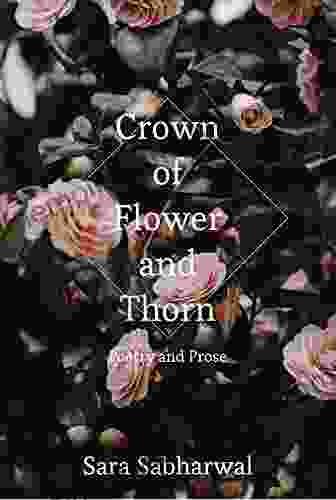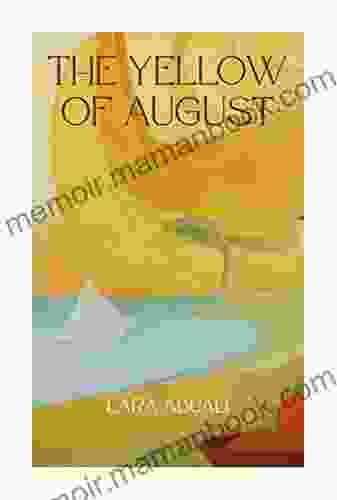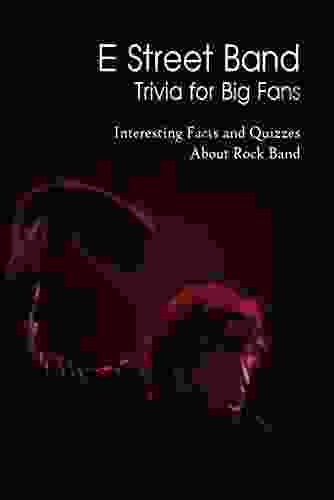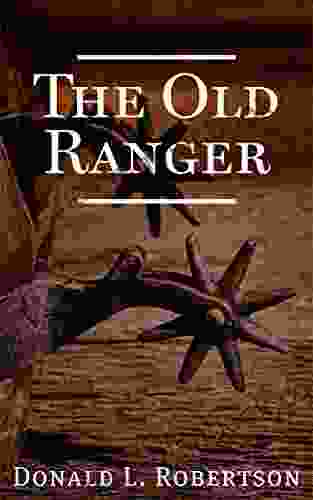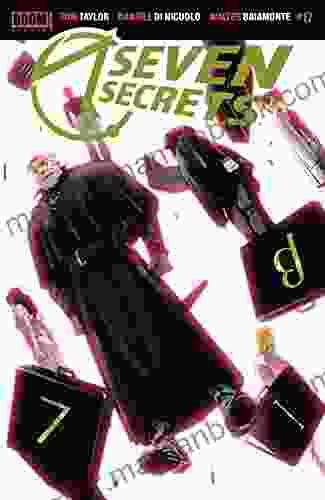Crown of Flower and Thorn: Exploring the Duality of Beauty and Suffering in Poetry and Prose

Abstract
The concept of the "crown of flower and thorn" serves as a potent metaphor in literature, capturing the paradoxical coexistence of beauty and suffering. This article delves into the manifold ways in which poets and prose writers have explored this dichotomy, examining the transformative power of both pain and joy in shaping the human experience. Through a comparative analysis of select literary works, the article sheds light on the intricate interplay between these opposing forces and their profound impact on the themes of love, loss, hope, and redemption.
Flower: The Allure of Beauty
Flowers, with their vibrant hues, delicate petals, and intoxicating fragrances, embody the allure of beauty. In poetry and prose, they have long been associated with love, hope, and joy. The rose, in particular, holds a prominent place in literature, symbolizing both romance and the promise of a better future.
In William Shakespeare's "Sonnet 18," the speaker extols the beauty of his beloved, comparing her to a "summer's day" and a "fair rose." By equating her with these natural wonders, the poet elevates her above all others, creating an image of unattainable perfection.
4.9 out of 5
| Language | : | English |
| File size | : | 1025 KB |
| Text-to-Speech | : | Enabled |
| Screen Reader | : | Supported |
| Enhanced typesetting | : | Enabled |
| Print length | : | 145 pages |
| Lending | : | Enabled |
Similarly, in Khalil Gibran's "The Prophet," the poet writes, "Beauty is like a flower that blossoms in the morning and withers at night." This ephemeral quality of beauty underscores its preciousness, reminding us to cherish it while we can.
Thorn: The Sting of Suffering
The thorn, on the other hand, represents the harsh realities of life, the pain and suffering that often accompany the pursuit of beauty. In literary works, thorns can symbolize physical wounds, emotional anguish, or the inevitable disappointments that come with human existence.
In Emily Dickinson's poem "Because I could not stop for Death," the speaker is carried away by Death in a carriage adorned with "a rat-tat in the Coach":
Because I could not stop for Death, He kindly stopped for me; The Carriage held but just Ourselves And Immortality.
We passed the School, where Children strove At Recess – in the Ring – We passed the Fields of Gazing Grain – We passed the Setting Sun –
Or rather – He passed Us – The Dews drew quivering and chill – For only Gossamer, my Gown – My Tippet – only Tulle –
We paused before a House that seemed A Swelling of the Ground – The Roof was scarcely visible – The Cornice – in the Ground –
Since then – 'tis Centuries – and yet Feels shorter than the Day I first surmised the Horses' Heads Were toward Eternity –
The sight of innocent children at play amidst the peace of nature contrasts sharply with the speaker's awareness of her approaching demise. The carriage ride becomes a journey into the unknown, where the speaker is forced to confront her mortality.
Crown of Flower and Thorn: The Paradox of Beauty and Suffering
The crown of flower and thorn symbolizes the paradoxical coexistence of beauty and suffering in human existence. It is a reminder that even in our most joyful moments, we are never truly free from the sting of pain.
In John Keats's "Ode to a Nightingale," the poet seeks relief from his earthly sorrows in the song of the nightingale:
My heart aches, and a drowsy numbness pains My sense, as though of hemlock I had drunk, Or emptied some dull opiate to the drains One minute past, and Lethe-wards had sunk: 'Tis not through envy of thy happy lot, But being too happy in thine happiness,— That thou, light-winged Dryad of the trees, In some melodious plot
Of beechen green, and shadows numberless, Singest of summer in full-throated ease.
Although the nightingale's song offers temporary solace, Keats cannot escape the realization that his own suffering is an intrinsic part of his human experience.
In Toni Morrison's novel "Beloved," the protagonist Sethe bears the physical and emotional scars of slavery. Despite the horrors she has endured, she finds moments of love and tenderness with her daughter Denver. The novel's title refers to Beloved, Sethe's murdered daughter who returns as a ghost to haunt her mother. Beloved's presence serves as a constant reminder of the past and the pain that Sethe must continue to bear.
The metaphor of the crown of flower and thorn encapsulates the duality of human existence. It is a recognition that beauty and suffering are inextricably linked, that one cannot exist without the other. By exploring this paradox in their works, poets and prose writers offer us a deeper understanding of our own humanity. They remind us that even in the darkest of times, there is always hope to be found in the midst of pain. And that even in the most joyous of moments, we should never take the blessings of life for granted.
References
- Dickinson, E. (1998). The Poems of Emily Dickinson. New York: Modern Library.
- Gibran, K. (1923). The Prophet. New York: Alfred A. Knopf.
- Keats, J. (1819). Ode to a Nightingale. London: C. and J. Ollier.
- Morrison, T. (1987). Beloved. New York: Alfred A. Knopf.
- Shakespeare, W. (1609). Sonnet 18. London: Thomas Thorpe.
4.9 out of 5
| Language | : | English |
| File size | : | 1025 KB |
| Text-to-Speech | : | Enabled |
| Screen Reader | : | Supported |
| Enhanced typesetting | : | Enabled |
| Print length | : | 145 pages |
| Lending | : | Enabled |
Do you want to contribute by writing guest posts on this blog?
Please contact us and send us a resume of previous articles that you have written.
 Top Book
Top Book Novel
Novel Fiction
Fiction Nonfiction
Nonfiction Literature
Literature Paperback
Paperback Hardcover
Hardcover E-book
E-book Audiobook
Audiobook Bestseller
Bestseller Classic
Classic Mystery
Mystery Thriller
Thriller Romance
Romance Fantasy
Fantasy Science Fiction
Science Fiction Biography
Biography Memoir
Memoir Autobiography
Autobiography Poetry
Poetry Drama
Drama Historical Fiction
Historical Fiction Self-help
Self-help Young Adult
Young Adult Childrens Books
Childrens Books Graphic Novel
Graphic Novel Anthology
Anthology Series
Series Encyclopedia
Encyclopedia Reference
Reference Guidebook
Guidebook Textbook
Textbook Workbook
Workbook Journal
Journal Diary
Diary Manuscript
Manuscript Folio
Folio Pulp Fiction
Pulp Fiction Short Stories
Short Stories Fairy Tales
Fairy Tales Fables
Fables Mythology
Mythology Philosophy
Philosophy Religion
Religion Spirituality
Spirituality Essays
Essays Critique
Critique Commentary
Commentary Glossary
Glossary Bibliography
Bibliography Index
Index Table of Contents
Table of Contents Preface
Preface Introduction
Introduction Foreword
Foreword Afterword
Afterword Appendices
Appendices Annotations
Annotations Footnotes
Footnotes Epilogue
Epilogue Prologue
Prologue James Baldwin
James Baldwin Arthur L Costa
Arthur L Costa Francis Ugbeikwu
Francis Ugbeikwu Lauren Mosback
Lauren Mosback Michael Latta
Michael Latta Frank Delaney
Frank Delaney James A Afremow
James A Afremow Scott Chaney
Scott Chaney Jerry Jay Carroll
Jerry Jay Carroll Justin Bieber
Justin Bieber Elvio Cipollone
Elvio Cipollone Kindle Comixology
Kindle Comixology Janet Lansbury
Janet Lansbury George F Walker
George F Walker Saul Williams
Saul Williams Nancy Arroyo Ruffin
Nancy Arroyo Ruffin Tiffanie Debartolo
Tiffanie Debartolo Danny Blackwell
Danny Blackwell Maxwell Levers
Maxwell Levers David Leadbeater
David Leadbeater
Light bulbAdvertise smarter! Our strategic ad space ensures maximum exposure. Reserve your spot today!
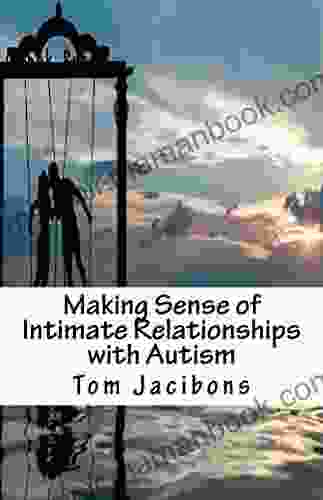
 Federico García LorcaMaking Sense of Intimate Relationships With Autism: Navigating Unique...
Federico García LorcaMaking Sense of Intimate Relationships With Autism: Navigating Unique... Branden SimmonsFollow ·17k
Branden SimmonsFollow ·17k Roy BellFollow ·13.7k
Roy BellFollow ·13.7k Gary ReedFollow ·9.7k
Gary ReedFollow ·9.7k Stephen KingFollow ·16.3k
Stephen KingFollow ·16.3k Walter SimmonsFollow ·7.5k
Walter SimmonsFollow ·7.5k John UpdikeFollow ·8.6k
John UpdikeFollow ·8.6k Jedidiah HayesFollow ·6.7k
Jedidiah HayesFollow ·6.7k Clark CampbellFollow ·5.1k
Clark CampbellFollow ·5.1k

 Robert Browning
Robert BrowningGeorge Gershwin's "Love You Porgy" from Porgy and Bess: A...
George Gershwin's "Love You Porgy" is an...

 Gary Reed
Gary ReedFitness Exercise Motivation and Goals: Build Lean Muscle...
Embark on a...

 Terence Nelson
Terence NelsonEat More, Train Less, and Get Lean: The Mr. America...
In today's fast-paced world, achieving a...
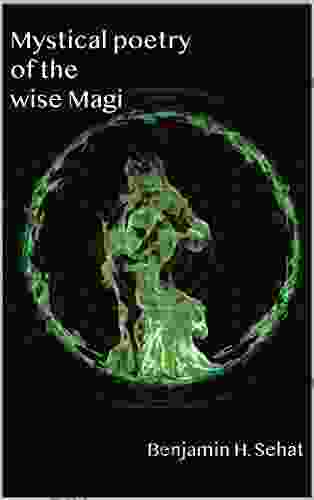
 J.D. Salinger
J.D. SalingerThe Mystical Poetry of the Wise Magi: Interpreting the...
In the realm of...

 Blake Bell
Blake BellStep By Step Instructions To Maximize Cryptocurrency...
Cryptocurrency...
4.9 out of 5
| Language | : | English |
| File size | : | 1025 KB |
| Text-to-Speech | : | Enabled |
| Screen Reader | : | Supported |
| Enhanced typesetting | : | Enabled |
| Print length | : | 145 pages |
| Lending | : | Enabled |


